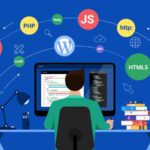Introduction
In today’s fast-paced digital landscape, mastering the art of Single-Page Application (SPA) development is crucial for staying competitive. SPAs offer users a seamless and responsive browsing experience by dynamically updating content without requiring page reloads. However, building effective SPAs requires a deep understanding of best practices and strategies to ensure optimal performance and user satisfaction.
Choosing the Right Framework
Selecting the appropriate JavaScript framework is the foundation of SPA development. Explore the pros and cons of popular frameworks like React, Angular, and Vue.js to determine which best suits your project requirements and team expertise.
Prioritizing Performance Optimization
Performance is key in SPA development. Learn essential techniques such as lazy loading, code splitting, and bundling to minimize initial load times and enhance overall responsiveness, ensuring a smooth user experience.
Implementing Efficient Data Management
Efficient data handling is critical for SPAs, especially when dealing with large datasets. Explore strategies like client-side caching, pagination, and server-side rendering to manage and manipulate data effectively while maintaining application performance.
Enhancing SEO in Single-Page Applications
Despite challenges, it’s possible to optimize SPAs for search engines. Discover SEO-friendly practices such as prerendering, dynamic rendering, and implementing schema markup to improve visibility and ranking in search results.
Securing Single-Page Applications
Security is paramount in SPA development to protect against threats like XSS (Cross-Site Scripting) and CSRF (Cross-Site Request Forgery). Explore techniques such as content security policy (CSP), input validation, and token-based authentication to safeguard your application and user data.
Designing User-Centric Interfaces
User interface design plays a crucial role in the success of SPAs. Learn how to create intuitive and visually appealing interfaces that prioritize user experience, accessibility, and mobile responsiveness, ultimately driving engagement and retention.
Implementing Progressive Web App (PWA) Features
Explore the benefits of transforming your SPA into a Progressive Web App (PWA) to deliver a more app-like experience. Discover PWA features such as offline support, push notifications, and installation prompts that enhance usability and user engagement.
Leveraging Microservices Architecture
Adopting a microservices architecture can streamline SPA development by breaking down complex applications into smaller, independent services. Explore the advantages of microservices, including scalability, flexibility, and easier maintenance, for building robust and scalable SPAs.
Testing and Debugging Strategies for SPAs
Effective testing and debugging are essential for ensuring the reliability and stability of SPAs. Learn about testing frameworks, tools, and methodologies tailored for SPAs, including unit testing, end-to-end testing, and performance profiling.
Continuous Integration and Deployment (CI/CD) for SPAs
Implementing CI/CD pipelines streamlines the development, testing, and deployment processes for SPAs, enabling faster delivery of updates and improvements. Discover best practices and tools for automating build, test, and deployment workflows to achieve seamless integration and deployment cycles.
Internationalization and Localization Strategies for SPAs
Explore techniques for internationalizing and localizing Single-Page Applications (SPAs) to cater to users from diverse linguistic and cultural backgrounds. Discuss approaches for managing multilingual content, supporting different date/time formats, and providing culturally relevant experiences to global audiences.
Handling Authentication and Authorization in SPAs
Dive into the complexities of implementing authentication and authorization mechanisms in SPAs to secure access to protected resources and ensure data privacy. Explore authentication methods such as JSON Web Tokens (JWT) and OAuth, along with authorization strategies for role-based access control (RBAC) and permissions management.
Monitoring and Performance Tuning in Production SPAs
Discover strategies for monitoring and optimizing the performance of SPAs in production environments to maintain reliability and scalability. Explore tools and techniques for tracking key performance indicators (KPIs), identifying performance bottlenecks, and fine-tuning SPA performance to deliver a seamless user experience.
Conclusion
Mastering the art of Single-Page Application development requires a combination of technical expertise, best practices, and strategic decision-making. By implementing the discussed best practices and strategies, developers can build high-performance, user-friendly SPAs that deliver exceptional experiences and drive business success in today’s digital landscape.
Search
Categories
- AI 3
- Analytics & Data Science 16
- Blogs 7
- Brand Identity 20
- Business 9
- CMS & LMS 22
- Development 1
- Digital Marketing 19
- Digital Signage 12
- E-commerce 6
- Enterprise solution 15
- Events 1
- Internet of Things 9
- Mobile App Development 15
- News 5
- Open Source Development 12
- SEO Search engine optimization 2
- Uncategorized 2
- Web Design 1
- Web Development 19
- Web Security and Performance 18
- Website Development 1
- WordPress Development 3







